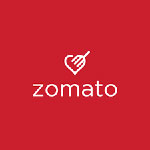 Last month we reported on the future of television and looked at the main role players on the VOD (video on demand) field – Naspers’ Showmax, VIDI and FrontRow.
Last month we reported on the future of television and looked at the main role players on the VOD (video on demand) field – Naspers’ Showmax, VIDI and FrontRow.
Barely a month later, last Wednesday, a new contender, ONTAPtv.com, was announced. And with packages starting at R39-00 it will be an attractive choice if you need to keep your budget in check.
Standard packages include a family package with family friendly content, one for just TV series, one for the movie buffs, a package for over 16s and a Mega Pack, which includes all these options. Package are R69-00 per month, but you can also subscribe to two per month at a cost of R79-00 or opt for the Mega Pack at a monthly fee of R89-00.
Apart from the local content, ONTAPtv provides the opportunity to watch specific African content at R39-00, Chinese television (nowTV) at R88-00 and FightSports at R69-00 per month.
Alternatively, if you don’t feel like committing just yet, you can just download movies at R15-00 (old movies) and R25-00 (new releases). Just like ShowMax you don’t have to sign your name away immediately – ONTAPtv does provide a trial period to ensure you are happy with your selection.
What makes ONTAPtv different from other VOD choices, is the option to download your chosen content instead of watching it online. Series and movies are also available in lower resolution to save bandwidth.
ONTAPtv.com is accessible via the service’s web platform and is currently compatible with PC, Mac, iOS- and Android devices. The platform was built with Firefox, Internet Explorer and Safari in mind. At the moment it does not support on Google Chrome, but this might change in the future.
[SOURCES: www.memeburn.com]




 THE VERDICT
THE VERDICT